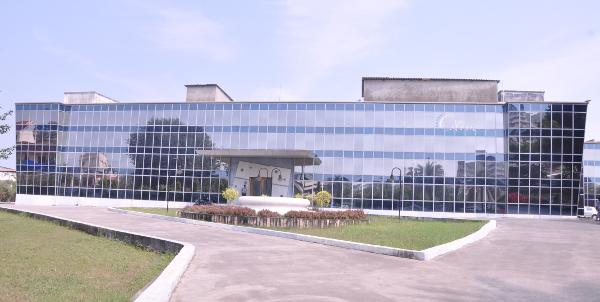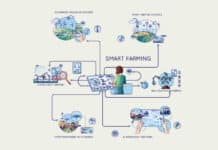
Users in SMEs often have similar requirements in terms of everyday computing needs — a user-friendly operating system, office applications, browsing and email applications, and accounting software. Like many other enterprises, Olive Healthcare also had a fairly simple work environment, and used the MS Windows, MS Office, Internet applications (Web browsers, email clients, etc.), and the PHP and MySQL-based ERP system. As far as hardware devices are concerned, the firm used Epson and HP printers, and multifunction devices that are generally used by SMEs.
Olive Healthcare ventured into the world of soft gelatin formulations by setting up its first manufacturing facility over three decades ago. However, it was only six months back that the company realised that it could bring down costs by implementing Linux in place of Windows.
“Linux is not just known as an efficient server operating system, but is now easily adaptable for desktop use also. We knew that migrating to Linux would also mean having to train our staff and acquaint them with the Linux environment,” states Vikram Chauhan, the IT manager. The firm started looking for a Linux-on-desktop solution provider, and the search ended when the Olive IT team interacted with Enjay, a provider of Linux solutions.
When Olive changed its outlook
Enjay was hired to implement Ubuntu 9.04 and replace Windows on 50 desktops at Olive Health Care. Enjay first studied the requirements of the employees, and then migrated to the new system. OpenOffice.org was installed in place of MS Office, and Evolution replaced Outlook.
The main attraction of OpenOffice.org office suite is its ability to define shortcut keys and macros in a simple way. “We customised OpenOffice.org applications for keyboard shortcuts, and this required organising user profiles for applications to suit the exact needs of the users. Toolbars were customised, shortcuts were created, and emails were migrated from Outlook to Evolution — and all this took us only 30 minutes to an hour,” claims Chaitanya Parekh, project manager for Linux solutions at Enjay.
Hardware was tuned by custom installation of drivers. Parekh adds, “We added drivers, introduced some applications for the company’s current systems, and removed the unnecessary ones.”
An in-house IT team can do this kind of migration, but it would take months of internal research, while streamlining the entire system would take at least eight months. With a qualified service provider, the entire migration took only three days.
Cost benefits
The entire solution cost Olive Healthcare about Rs 1 lakh, while for Windows, each operating system license, along with basic software like MS Office and anti-virus, cost the company Rs 22,000. Parekh states, “To this, add the cost for other applications, plus Client Access Licenses (CALs) and Terminal Server CALs, server software, etc, for each system. This would work out to about Rs 25 lakh. With Linux, you pay about Rs 2,000 per system and we implement the solution, provide training to employees, and support for a year. The support service can be continued at Rs 500 per machine, per year.”
An advantage here is that Linux does not need an anti-virus, because most viruses are written for Windows. Linux is frequently updated with security patches, and the vulnerabilities are far fewer. In the past few months, Olive has not experienced any downtime, and never felt the need to reinstall the OS.
Challenges while migrating
Typically, employees used to years of computing on the Windows platform were resistant to change. Parekh tells us how the firm overcame this challenge.
“Employees were exposed to the Linux environment for two days before implementing the systems, to get their feedback, both negative or positive, and this was followed by training. In the first session, most of the users had doubts about how OpenOffice.org worked. Soon, they learnt that working on OpenOffice.org and Evolution is better than MS Office and Outlook. MS Office restrictions (like, a Word 2003 document will not open on Word 97) are annoying, but there is no such hurdle in OpenOffice.org. Moreover, people can simultaneously work on OpenOffice.org Calc (collaborative editing of a single spreadsheet), unlike on Excel.”
Another issue was the changeover from Word to OpenOffice.org Writer. When legacy Word files were migrated, tables in the documents appeared in an illegible format. “We created a macro to reformat the table in OpenOffice.org Writer, and provided a shortcut for it. When people opened an old file, they could click on the shortcut to run the macro easily, and the table would get adjusted according to the pagination of OpenOffice.org Writer,” describes Parekh.
Other advantages
The stability and security that Linux offers can bring system maintenance costs down drastically. Chauhan adds, “We are able to take inventory of all systems in the network using simple commands like ssh, arp-scan and lspci. We have also been given a provision for support on problems that users face in their day-to-day Linux computing.”
One of the main attractions of Linux is that a little training can add a lot to employees’ efficiency. Chauhan was given a four-hour training session on application management, print management and user management. He was also given adequate information about providing remote support to users sitting in different locations, using SSH and VNC.
The road ahead
Enjay has suggested that Olive download applications like QCAD, and software to view the periodic table, which assist in its work (which involves chemicals). QCAD can be used in place of AutoCAD, and lets users prepare 2D and 3D drawings. The applications are available for free in Ubuntu’s own repository, and are easily installable.
Chauhan is testing the functioning of his organisation on Ubuntu 11.04, and has plans to upgrade the operating system before August. He also plans to put an ERP system in place in the coming months. “We are looking for a full-fledged solution to handle accounts, purchase, production, invoices, quality, maintenance and excise. PC SOFT ERP solutions are one of our options, but we are open to others, including FOSS,” Chauhan concludes.



















































































